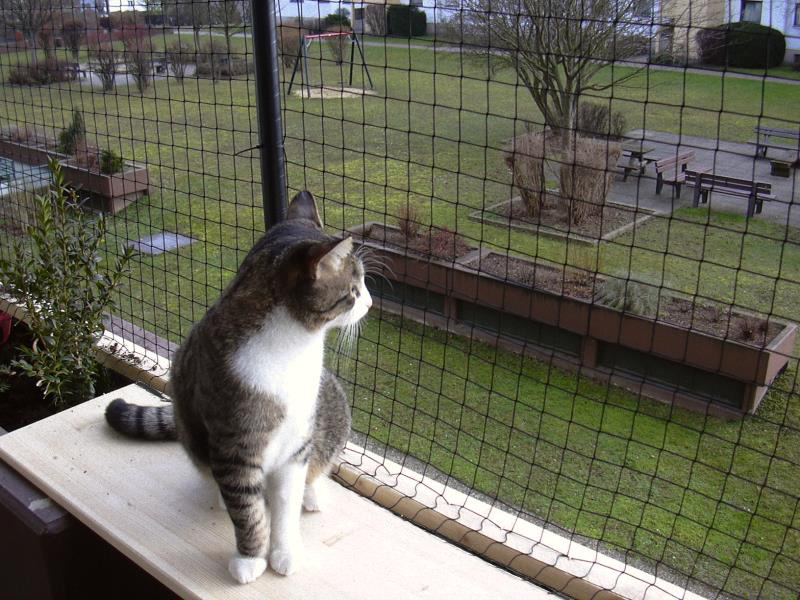The age-old debate between cat lovers and wildlife enthusiasts has revolved around one critical issue: the impact of domestic cats on local wildlife populations. While domestic cats are beloved pets in countless households, their hunting instincts can have devastating consequences for the environment. Cat fences have emerged as a solution to mitigate this issue, which is crucial in minimizing wildlife interactions. Explore the significance of the cat fence and their contribution to preserving the balance of our ecosystems.
The Cat Predation Problem
Cats, both indoor and outdoor, are natural-born hunters. Their keen senses and agile bodies make them formidable predators, often leading to the decimation of local wildlife populations. Birds, small mammals, and even reptiles often fall victim to a cat’s hunting instincts. This raises serious concerns about the stability of various ecosystems. Many bird species are already facing population declines, and the addition of cat predation only exacerbates this issue. Furthermore, cats can also spread diseases to wildlife, such as toxoplasmosis, posing an additional threat to various species.
Cat Fences: A Solution for Cats and Wildlife
Cat fences offer a practical solution to this ongoing problem. These specially designed barriers are constructed to create a contained environment for cats, allowing them to enjoy the outdoors safely without posing a threat to local wildlife. There are several types of cat fences available, including physical barriers, electronic systems, and netting enclosures, each designed to meet different needs and preferences.
- Physical Barriers
Physical cat fences consist of solid structures, such as wooden or metal panels, designed to enclose a defined area. These fences prevent cats from roaming freely and hunting wildlife outside their designated space. They are effective at keeping cats away from birds, small mammals, and other potential prey.
- Electronic Systems
Electronic cat fences use technology to create virtual boundaries. A collar worn by the cat emits a warning signal when they approach the set boundary. If the cat persists, it delivers a mild electric shock, encouraging the cat to retreat. While not physically confining the cat, electronic systems are effective at discouraging hunting behavior beyond the defined perimeter.
- Netting Enclosures
Netting enclosures are large, enclosed areas made of sturdy netting. They provide cats with the sensation of being outdoors while preventing them from accessing wildlife. These enclosures can be attached to existing structures, such as a house or fence, or freestanding in a yard.
The Benefits of Cat Fences
Cat fences offer a range of benefits, both for cats and the wildlife they may encounter:
- Protecting Local Wildlife: Cat fences effectively minimize interactions between domestic cats and local wildlife. Birds, small mammals, and reptiles are safer when cats are confined to designated areas.
- Reducing Cat Injuries: Cat fences prevent cats from getting into dangerous situations, such as encounters with larger wildlife or traffic accidents. This helps keep cats safe while still allowing them outdoor access.
- Minimizing Disease Spread: By keeping cats within designated spaces, cat fences also reduce the risk of cats coming into contact with and spreading diseases to wildlife.
- Encouraging Responsible Pet Ownership: Cat fences promote responsible pet ownership by preventing cats from wandering freely and potentially causing harm to wildlife and neighboring pets.
Conclusion
Cat fences have emerged as an essential tool in the effort to minimize wildlife interactions, preserving the balance of our ecosystems. They provide a win-win solution by allowing cats to enjoy the outdoors safely and protecting local wildlife from hunting and disease transmission. With various types of cat fences available, there is a suitable solution for every cat owner, regardless of their living situation.
The adoption of cat fences, coupled with responsible pet ownership, can significantly reduce the negative impact of domestic cats on the environment. This proactive approach allows us to coexist with our feline companions while also safeguarding the rich biodiversity that surrounds us. By understanding the vital role that cat fences play, we can take meaningful steps toward a more harmonious relationship between cats and wildlife.

